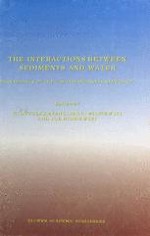1997 | OriginalPaper | Buchkapitel
Algal Blooms in the Darling-Barwon River, Australia
verfasst von : T. H. Donnelly, M. R. Grace, B. T. Hart
Erschienen in: The Interactions Between Sediments and Water
Verlag: Springer Netherlands
Enthalten in: Professional Book Archive
Aktivieren Sie unsere intelligente Suche, um passende Fachinhalte oder Patente zu finden.
Wählen Sie Textabschnitte aus um mit Künstlicher Intelligenz passenden Patente zu finden. powered by
Markieren Sie Textabschnitte, um KI-gestützt weitere passende Inhalte zu finden. powered by
Australian waterbodies have long water residence times, stratification is common, and eutrophication is driven mainly by the internal loads. The 1991 blue-green algal bloom on the Darling-Barwon River was at a time of low river flow (∼100’s ML/day) and hot/still conditions. The sustained low flow allowed significant influx of a sulfate-rich saline groundwater and this caused clay flocculation, water clarification and increased photosynthesis in the surface water, and increased sulfate reduction, pyrite formation and Fe mobilisation in anoxic bottom sediments. Since this time similar optimum bloom periods have not produced blooms, or Fe mobilisation, despite high soluble P concentrations. Algal growth during optimum bloom periods is known to be N-limited and it is possible that, in this case, essential trace elements are limiting N-fixation — clay flocculation is a very efficient process of removing trace elements from the water column. Optimum bloom periods can potentially set up a feed-back involving the bottom sediments and increasing sulfate concentration, to resupply surface water with P and trace metals. It is suggested that this operated in late 1991, but not during later optimum bloom periods as no further Fe mobilisation is recorded. The management implication is to maintain sufficient river flow to prevent any significant groundwater influx.
